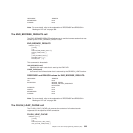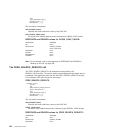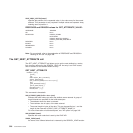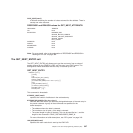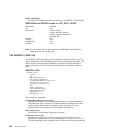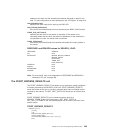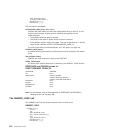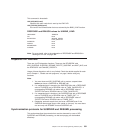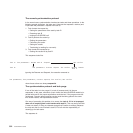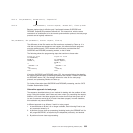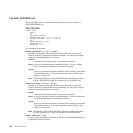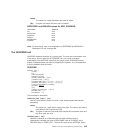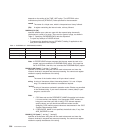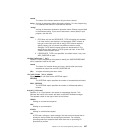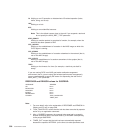
This command is threadsafe.
LDAP_RESPONSE(name4)
specifies the return code that is sent by the LDAP API.
LDAP_SESSION_TOKEN(name4)
the name of the fullword token that was returned by the BIND_LDAP function.
RESPONSE and REASON values for UNBIND_LDAP:
RESPONSE REASON
OK None
EXCEPTION INVALID_TOKEN
LDAP_INACTIVE
DISASTER None
INVALID None
KERNERROR None
PURGED None
Note: For more detail, refer to the explanation of RESPONSE and REASON in
“Making an XPI call” on page 308.
Dispatcher XPI functions
There are six XPI dispatcher functions. These are the DFHDSSRX calls
ADD_SUSPEND, SUSPEND, RESUME, DELETE_SUSPEND, and WAIT_MVS, and
the DFHDSATX call CHANGE_PRIORITY.
Usage of these dispatcher calls is very limited. Check the details supplied for each
exit in Chapter 1, “Global user exit programs,” on page 3 before using any
functions.
Note:
1. You must issue an ADD_SUSPEND call to create a suspend token
before you issue a SUSPEND or RESUME call.
2. If a suspended task is canceled, the SUSPEND fails with a RESPONSE
value of ‘PURGED’ and a REASON value of ‘TASK_CANCELLED’. A
corresponding RESUME call returns with a RESPONSE value of
‘EXCEPTION’ and a REASON value of ‘TASK_CANCELLED’.
3. If a suspended task is timed out, the SUSPEND fails with a RESPONSE
value of ‘PURGED’ and a REASON value of ‘TIMED_OUT’. A
corresponding RESUME call returns with a RESPONSE value of
‘EXCEPTION’ and a REASON value of ‘TIMED_OUT’.
4. Dispatcher protocols require that you issue a RESUME even if the
SUSPEND was purged (due to task cancel or time-out). You must issue
one and only one RESUME for each SUSPEND call.
Synchronization protocols for SUSPEND and RESUME processing
This section describes the protocols that must be observed by users of XPI
SUSPEND and RESUME processing, so that task purging can be handled
effectively.
Chapter 3. The user exit programming interface (XPI) 331



